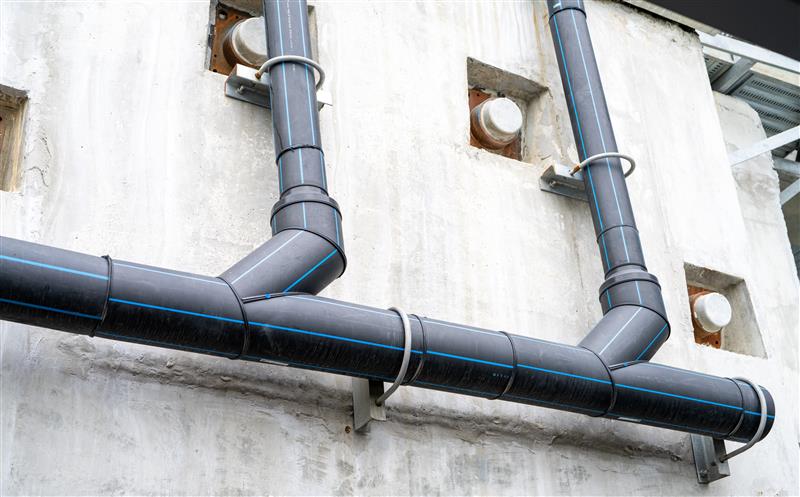
Plastic pipes in infrastructure development are revolutionizing the way we build sustainable and resilient urban environments.
Urbanization on a very rapid scale, coupled with increased effects of climate change, has brought challenges to modern infrastructure that were previously unimaginable. For thriving cities and communities, sustainable and resilient infrastructure is no longer a nicety, it is a necessity.
Plastic pipes will probably go on playing an even more meaningful role in driving innovation that shapes the future of infrastructure development in both urban and rural settings.
And it continues to be that, at every step in innovation and in technological development, plastic pipe will continue to play an ever-increasing role in shaping the future – not just in urban infrastructure but also rural – with sustainability and resiliency.
The Evolving Landscape of Infrastructure Needs
Rising urban populations and extreme climate events are creating unprecedented pressure on water, energy, and sanitation systems. Infrastructure must now be:
-
Resilient against floods, droughts, and storms
-
Efficient in resource usage
-
Capable of integrating with smart city technologies
Plastic pipes — thanks to their flexibility, durability, and adaptability — are uniquely suited to meet these demands.
Sustainability: The Foundation of Future Infrastructure
The infrastructure of tomorrow must be:
-
Environmentally sustainable: Low emissions, recyclable, energy-efficient
-
Socially inclusive: Equal access to clean water and sanitation
-
Economically efficient: Durable, low-maintenance, and long-lasting
Plastic pipes excel in all three areas, especially as new materials and processes emerge.
Innovations in Plastic Pipes for Infrastructure Development
Advanced Polymers
New polymers offer:
-
Enhanced temperature and pressure resistance
-
Extended lifespan in corrosive or extreme environments
-
Greater durability in urban and rural infrastructure applications
Nanotechnology Integration
-
Improved corrosion resistance
-
Self-healing microstructures
- Antimicrobial surfaces that enhance hygiene and water quality
3D Printing in Pipe Manufacturing
-
Custom pipe geometries for unique project needs
-
On-demand manufacturing with less material waste
-
Possibility of on-site pipe production, reducing logistics and costs
Smart Pipes: IoT Integration in Infrastructure
Sensor-Enabled Smart Piping Systems
Real-time monitoring of:
- Water flow
- Pressure
- Temperature
- Corrosion levels
Benefits of IoT in Pipe Networks
- Early leak detection
- Predictive maintenance using AI
- Extended pipe lifespan
- Reduced operational costs for cities and utilities
These smart systems enable data-driven decision-making, reducing downtime and improving infrastructure efficiency.
Advantages of Plastic Pipes for Smart Cities
Improved Efficiency
Smooth walls reduce friction → lower energy usage for pumping.
Reduced leak rates compared to metal pipes.
Enhanced Sustainability
Lower environmental impact during manufacturing.
Supports water-saving infrastructure.
Increased Resilience
Better performance in extreme weather or seismic events.
Long-term reliability with fewer service disruptions.
Smart Pipe Technology and the Future
IoT integration enables real-time monitoring of flow, leaks, and pressure.
Advanced materials like UV-resistant, bio-based plastics are emerging.
Circular economy models are driving plastic pipe reuse and recycling.
The Environmental Future of Plastic Pipes
Sustainability remains a top priority. Future innovations will focus on:
- Eco-friendly plastic production
- Wider use of recyclable and biodegradable materials
- Circular economy practices for end-of-life pipe management
Opportunities for Seamless and High-Performance Pipe Systems
Seamless pipes offer:
- Fewer joints and failure points
- Higher pressure resistance
- Cleaner, more efficient flow paths
Advances in extrusion and 3D printing could revolutionize how seamless plastic pipes are used in large-scale infrastructure.
Future of PVC and Plastic Pipe Materials
Expect continued innovation in:
- High-performance PVC compounds
- PVC with integrated sensor tech
- Bio-based PVC alternatives with a lower environmental impact
The evolution of PVC and HDPE will determine how widely plastic pipes can be adopted in green building standards and infrastructure policies.
Conclusion: Plastic Pipes Powering the Future
Plastic pipes are no longer just a cost-effective alternative — they are a core enabler of next-generation infrastructure.
- They’re central to smart city development
- They support climate-resilient design
- They’re becoming smarter, stronger, and more sustainable
As innovation continues, plastic pipes will drive forward urban and rural infrastructure with unmatched flexibility, intelligence, and ecological responsibility.
Explore What’s Next in Pipe Technology
Engineers, manufacturers, and city planners should collaborate to:
- Adopt new technologies
- Monitor global trends
- Advance sustainable pipe systems


